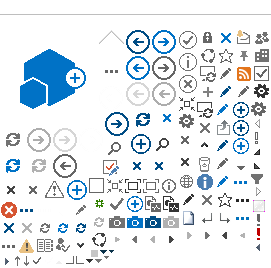The uncertainty surrounding tariffs on key trade partners like Canada, Mexico and China have created immediate challenges for U.S. farmers.
Farmers have always faced unpredictable challenges. Droughts, floods and pests have been part of the job for generations. Until now, farms have generally employed strategies like crop insurance, contract farming, conservation practices and crop diversification to help manage the cyclical risks that come with agricultural business. But current global conditions may have farmers rethinking this risk strategy. Trade tensions and catastrophes are disrupting supply chains, increasing costs and creating new layers of uncertainty.
As risks evolve, so must financial strategies, ensuring farmers have the resources to withstand volatility and keep their businesses thriving. While traditional insurance policies still provide crucial coverage, many farmers face increasing exclusions, limitations and challenges in securing the coverage they need.
Tariffs' Impact on Farmers
The uncertainty surrounding tariffs on key trade partners like Canada, Mexico and China have created immediate challenges for U.S. farmers. Higher tariffs on American exports reduce demand for U.S. crops, leading to surplus goods and falling prices. Tariffs also drive up costs for essential farm supplies, including fertilizers, equipment parts and raw materials, further squeezing farm profits.
Further, farmers may face a secondary challenge from reduced demand for agricultural products, lower consumer spending and tighter financial conditions, making it even harder for farmers to remain profitable.
Farmers who rely on imported supplies may attempt to switch to domestic or alternative sources to avoid tariff-related cost increases. However, this shift often comes at a price—whether through increased expenses, lower-quality materials or resistance from customers who prefer established products.
For example, a farmer who relies on imported steel parts to build or repair their equipment may face rising costs due to tariffs on steel imports. To avoid these tariff-related increases, the farmer might switch to sourcing steel from a domestic supplier. However, the domestic steel might cost 10% more per ton and is lower quality, requiring the farmer to purchase additional material or make more frequent repairs to their machinery. Additionally, domestic suppliers may have limited availability, causing delays in equipment repairs or upgrades.
Crop insurance typically doesn't cover the full cost of crop loss, especially after deductibles and coverage limits. Additionally, it typically excludes damage from factors such as pesticide drift, fire, negligence and failure to follow good farming practice (GFP), leaving farmers vulnerable to unforeseen risks that can significantly impact their operations.
To address these gaps, as well as the ones posed by economic volatility and severe weather, farmers can consider a variety of solutions to complement their crop insurance and ensure they have comprehensive protection. Here are three options:
1) 831(b) self-insurance plan. This allows farmers to set aside tax-deferred funds to cover risks that traditional insurance may not address. Farmers can customize this self-insured plan to cover a wide range of losses, from tariff-related price declines to supply-chain disruptions.
Stacking 831(b) plans on top of crop insurance helps protect against not only crop losses but also catastrophic events like storms, fires and other unforeseen risks, offering essential safeguards for agricultural businesses.
2) Data-driven weather derivatives. As artificial intelligence (AI) improves, so do weather derivatives, which are contracts that hedge against weather-related losses by providing payouts based on weather-related metrics. AI enhances forecast accuracy, models how weather impacts yields and revenue, and recommends optimal contract terms. Integrated with farm tools that track soil, crop health and weather data, AI can also trigger real-time alerts to adjust hedging strategies. Used alongside crop insurance, weather derivatives offer faster, more flexible protection—filling gaps where traditional coverage may fall short.
3) Risk-sharing cooperatives or mutual insurance pools. In such groups, farmers can collaborate to share the burden of catastrophic losses. An 831(b) can also function as a group insurance pool with the right administrator.
Van Carlson is founder & CEO of SRA 831(b) Admin.
